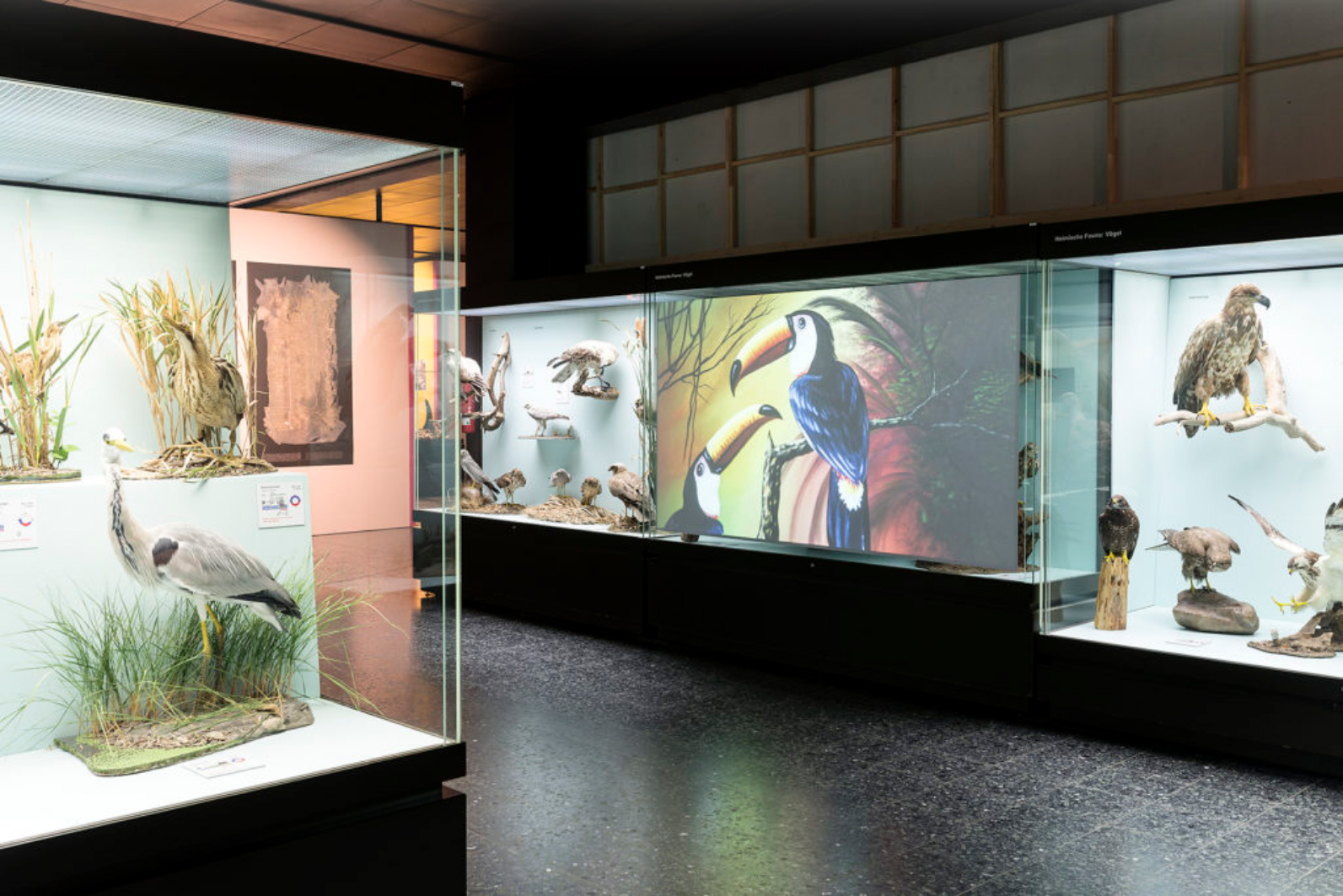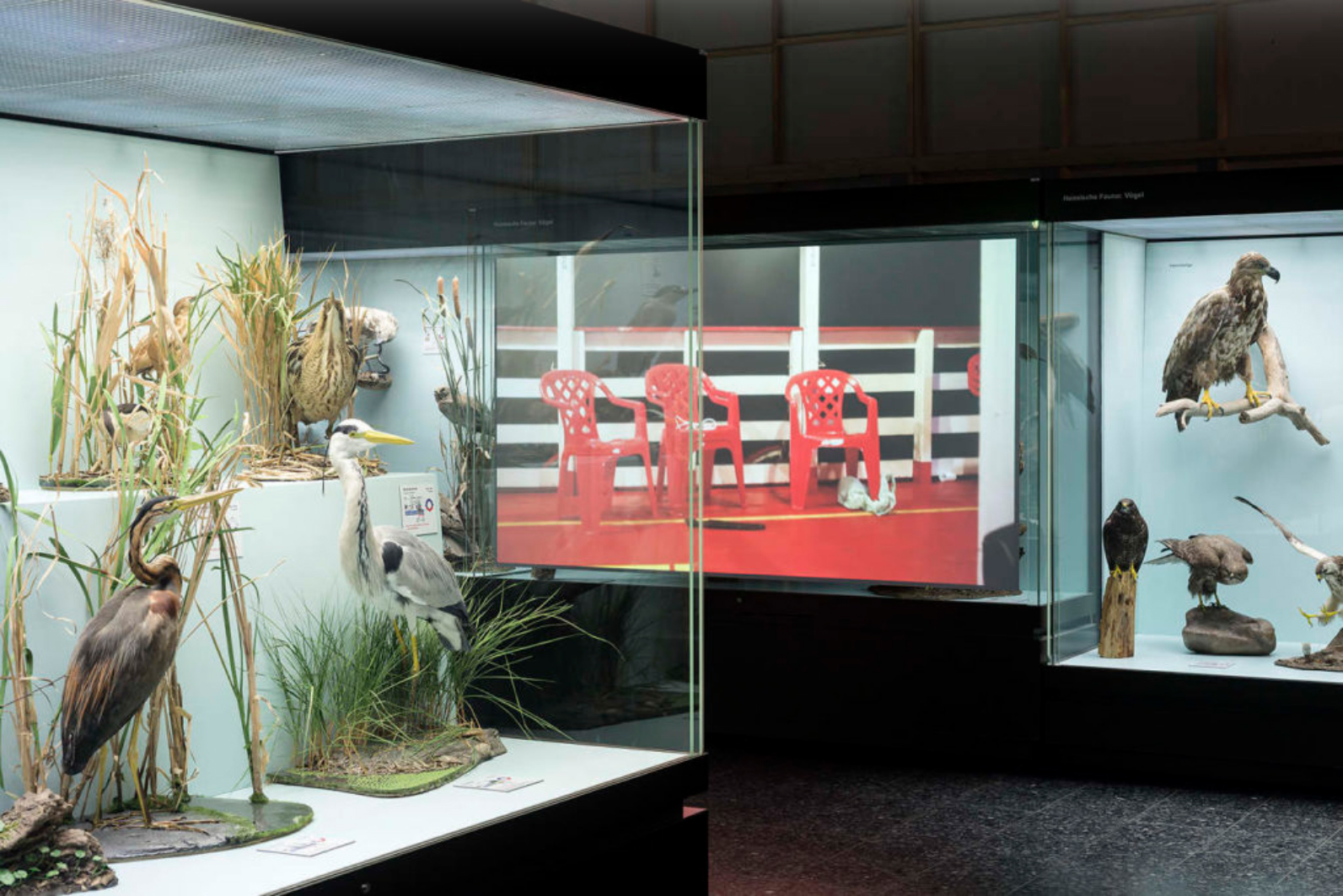DISAPPEARING LEGACIES
Disappearing Legacies: The World as Forest, Anne-Sophie-Springer & Etienne Turpin
10 November 2017 – 29 March 2018 Centrum für Naturkunde (CeNak) Zoologisches Museum Hamburg
Disappearing Legacies: The World as Forest, Anne-Sophie-Springer & Etienne Turpin
10 November 2017 – 29 March 2018 Centrum für Naturkunde (CeNak) Zoologisches Museum Hamburg
One-hundred and sixty years ago, Alfred Russel Wallace deciphered the principle of species evolution during research trips to South America and Southeast Asia. From 10 November 2017 to 29 March 2018, the special exhibition Verschwindende Vermächtnisse: Die Welt als Wald [Disappearing Legacies: The World as a Forest] confronts the destruction of these tropical habitats in the context of the Anthropocene and mass extinction.
The concept of the project is unique—a hybrid between a historical thematic presentation and a major exhibition of contemporary art, transforming the Zoological Museum im Centrum für Naturkunde (CeNak), University of Hamburg, into a threatened (rain)forest habitat. The centerpiece of the intervention is the presentation of 13 contemporary works of art—including eight new commissions—by Maria Thereza Alves, Ursula Biemann, Bik Van der Pol, Shannon Lee Castleman, Revital Cohen & Tuur van Balen, Mark Dion, Radjawali Irendra / Akademi Drone Indonesia, Armin Linke with Giulia Bruno and Giuseppe Ielasi, Barbara Marcel, Julian Oliver & Crystelle Vũ, Robert Zhao Renhui / The Institute of Critical Zoologists, SHIMURAbros und autonoma / Paulo Tavares.

Some of the works have a direct relation to the University of Hamburg’s collections. Other artistic works were developed through journeys to Brazil and Indonesia. Spending time on Borneo, Java, and Sumatra, photographer and filmmaker Armin Linke — together with his colleague Giulia Bruno and exhibition curators Anna-Sophie Springer and Etienne Turpin — conducted numerous interviews with local residents, plantation workers, small land holders, environmentalists, government officials, and scientists. The result is a cinematic document that reflects the speed with which Indonesia is currently transforming into a palm-oil nation amid giant peat fires. In her museum installation, Maria Thereza Alves lends the word to 33 Indigenous clan chiefs, whom she accompanied for one month last summer in Brazil while participating in a workshop on Indigenous agroforestry and resource conservation. The exhibition is extended by a series of curatorial assemblages, which include specimens from the CeNak’s zoological collections and the botanical collections of the Herbarium Hamburgense that were selected in dialogue with the respective institutions’ scientific curators: skulls, animal skins, spirit specimens, herbarium sheets, and numerous cases of colorful pinned insects.
Together, the artistic positions and curatorial assemblages presented in the exhibition Verschwindende Vermächtnisse: Die Welt als Wald renounce a romantic image of untouched nature, and instead critically inquire into the legacies resulting from the relentless destruction of highly complex ecosystems.
More details on the exhibition at: http://reassemblingnature.org/verschwindende-vermaechtnisse/




